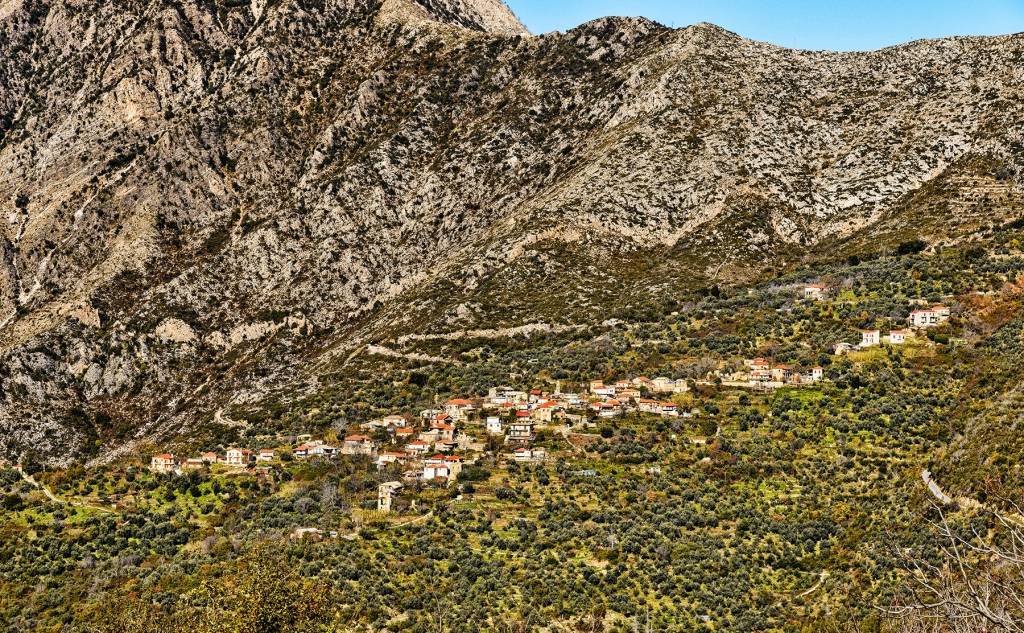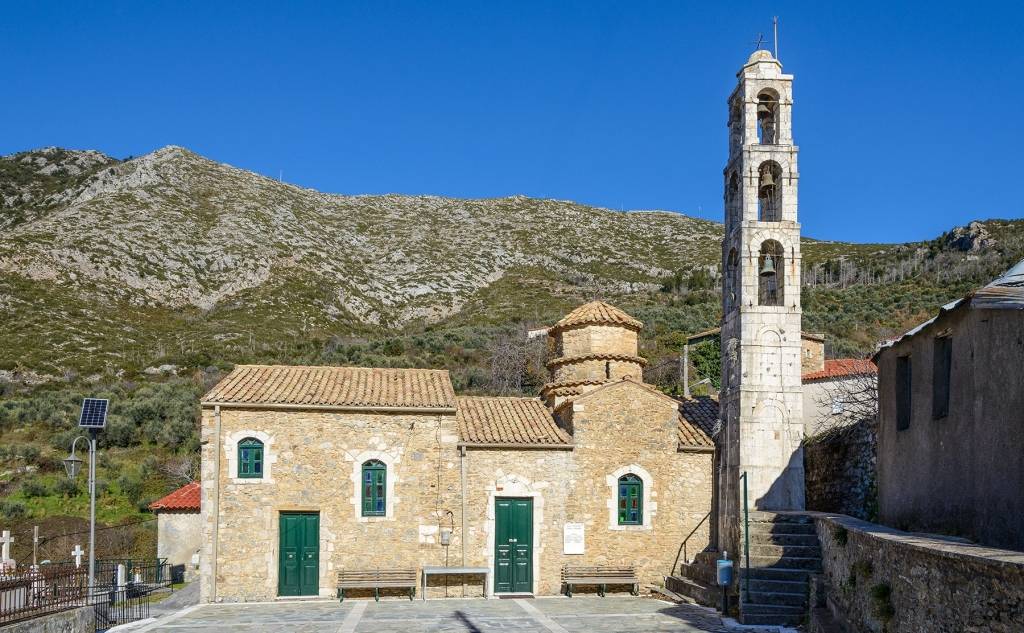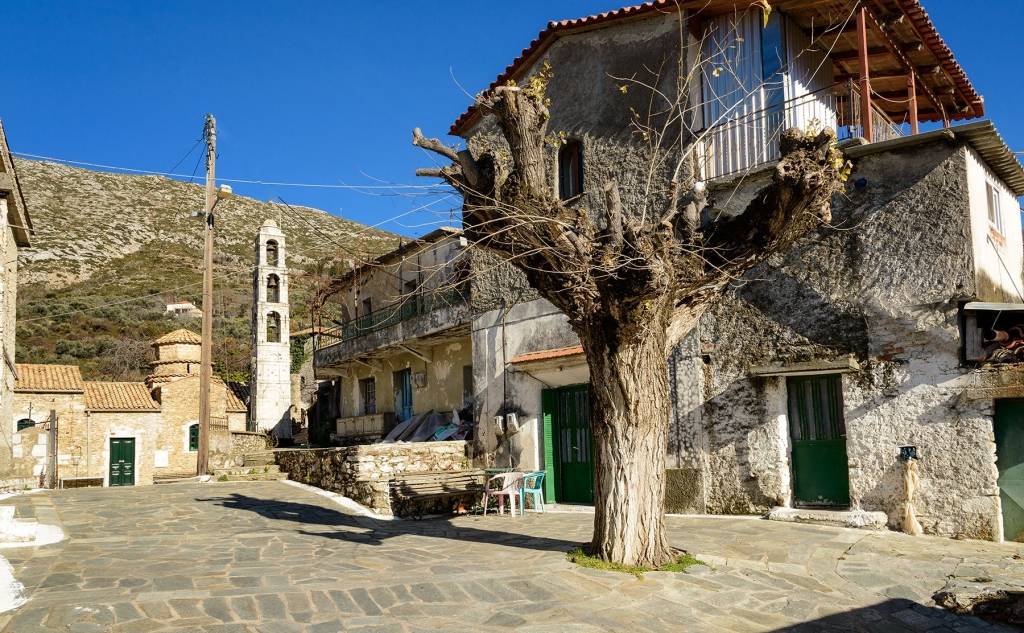







The traditional village of Ladas is built at the foothills of Mount Lykouri or Agios Georgios, in western Mount Taygetos, at an altitude of 680 metres. Earlier the village was known as "Koutsava Lada". It has approximately 80 permanent residents and is 23 kilometres from Kalamata. It is believed that the village’s name comes from the primary settler, whose surname was Ladas. The original location of the settlement was different from what it is today. Specifically, it was located in Palia Avli (Palaian Avlin) near the chapel of Agioi Theodoroi, the first church built in the village. This is evident from the ancient, ruined buildings and the objects found during the opening of the rural road. The exact time of the creation of the first settlement is unknown. It is estimated that it was created during the 8th century, after the colonisation of the Miligian Slavs.
In the village, visitors can wander through the stone-built alleys and quench their thirst at the fountains with the gurgling water. The oldest source of water in the village is Kamari, while the Loutsa fountain is also of particular beauty. Also in the village is the house where the first tobacco manufacturer of Kalamata, Dimitrios Damilatis, who founded his tobacco factory in 1875 and operated until 1970, was born. In the traditional square with well-preserved buildings, you can enjoy a coffee under the shade of the century-old plane trees. It is also worth visiting the Hero of the fallen in the Balkan wars, as well as taking a tour of the path on the Dafneos River, which connects the village of Lada with Karveli. In fact, in the area of Matia, the double-arched, stone Ladokarvelio bridge, which consists of a small and a large arch, dominates the site. Also, in the area, the catholicon of the old Monastery of Panagia Kourtzeni (Assumption of the Virgin or Zoodochos Pigi) is preserved, in which two main building phases are recognised. In fact, according to the Founding Code of the monastery, 1762 is considered to be the year of foundation. In the surrounding area of the monastery, visitors can see traces of cells.
The village is dominated by the majestic temple of the once flourishing Monastery of the Supreme Taxiarchs, which was rebuilt in the 14th century. It is a four-columned temple with a dome in the style of an "extra lined cross", where the narthex and the tall spire were added later. The church of Agios Vassilios (1783), located in the village's central square (and the churches of Agios Nikolaos and Agios Athanasios (18th century) at the southwestern end of the village), is also worth mentioning. Also, at the top of the hill (an hour's walk from Lada) is the small church of Saint John the Theologian, which opens once a year on May 8th. On this day, a big festival is held in the small church. From the eve, in the afternoon, the faithful pilgrims take the road that leads up to the church with their donkeys loaded with the meat - "ayanika", as lambs and goats are usually called. In the evening, after vespers, they light a fire in the forecourt of the small church, while at dawn, they light the fires on the grills. After the end of the Divine Liturgy, the feast begins and lasts until the morning hours.
On the second Saturday of July, the "Wine Festival" takes place in the village, accompanied by various cultural events, while those present are offered free local wine. At this point, we should mention that Ladas is the only village in Alagonia that maintains its vines; in fact, the variety "Platana" or "Koutsavitiko" is very old. Also, every year, in October, a bazaar of traditional products, which is an initiative of the Cultural Association of Ladaia to highlight the wealth of the region (potatoes, chestnuts, diples, herbs, wine, etc.), is organised in the village. The Cultural Association of Ladaia, "The Olympian of Ladas", was founded in 1981 in Kalamata, following the actions of the late teacher, Panagiotis Christathakis, to organise cultural events, maintain monuments, list buildings, etc. Finally, the Cultural Association was named after the Olympian Ladas, who died on the way to Sparta on his return from ancient Olympia and was buried there. Pausanias found his tomb, which he mentions in his "Travels". Of course, there is no historical support, and the view of the association of Olympianikis with the village of Ladas is considered wrong.